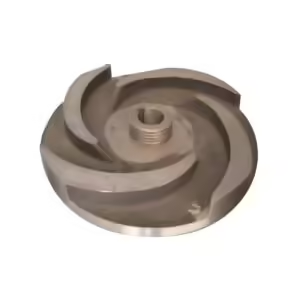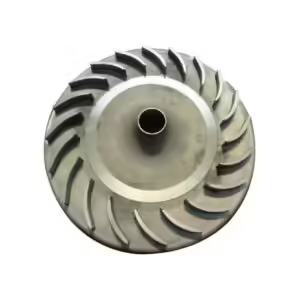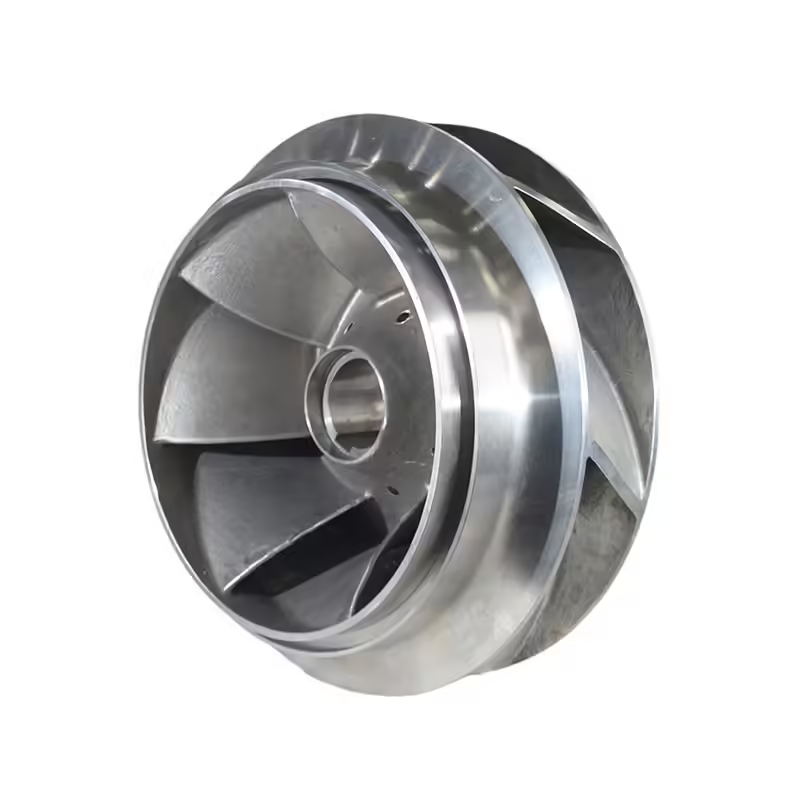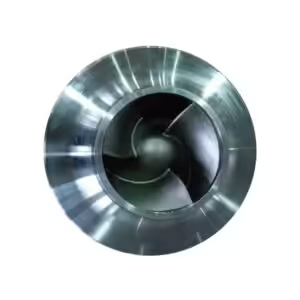5 علامات صادمة تشير إلى ضرورة استبدال مروحة مضخة المياه
مرحباً بكم في مدونتي!
يسعدني وجودك هنا! قبل أن نتعمق في المحتوى، أود أن تنضموا إليّ على منصات التواصل الاجتماعي. هناك أشارككم أفكارًا إضافية، وأتواصل مع مجتمعنا الرائع، وأُطلعكم على آخر الأخبار. إليكم كيفية البقاء على تواصل:
📘 فيسبوك: شركة شنغهاي لييروو الصناعية التجارية المحدودة
الآن، لننطلق في هذه الرحلة معًا! آمل أن تجدوا هذا المحتوى مفيدًا ومُلهمًا وقيّمًا. هيا بنا!
جدول المحتويات
مقدمة


When it comes to maintaining the efficiency of your cooling or fluid transfer system, the water pump impeller is a critical component that often goes unnoticed until it fails. A water pump impeller plays a vital role in circulating coolant or water throughout the engine or system, ensuring that temperatures are regulated and processes run smoothly. This process is particularly important for applications such as automotive engines, industrial machines, and marine systems. The impeller, which is typically made of durable materials such as stainless steel or aluminum, helps keep the water circulating to prevent overheating. Over time, however, wear and tear, corrosion, or debris accumulation can damage the impeller.
When this happens, the system may begin to fail, leading to performance issues or, in the worst-case scenario, complete system failure. In this article, we will dive into five shocking signs that indicate you need a water pump impeller replacement and why timely action is essential to avoid costly repairs or equipment breakdowns.
Sign #1 – Overheating Engine or System
One of the most alarming and clear signs of a failing water pump impeller is overheating. If the impeller blades are worn, broken, or clogged, they cannot circulate water efficiently. This reduced flow can cause an engine to overheat rapidly, especially under heavy loads or in hot environments. Continuous overheating not only affects performance but also risks long-term damage to components, including warped heads, damaged seals, or even severe engine failure. Recognizing overheating early can save you from extensive repairs.
Overheating engines or systems indicate a severe issue with the water pump impeller. Without proper water circulation, there is inadequate cooling, causing the engine to run too hot. If you notice rising temperatures in your system, it’s crucial to inspect the impeller. If it’s failing, a water pump impeller replacement could prevent much more costly damage in the long run.
Sign #2 – Unusual Noise During Operation
An unusual grinding, squealing, or rattling noise emanating from the water pump area can suggest that the water pump impeller is damaged or loose. Since the impeller rotates at high speeds, any misalignment or damage will often result in noticeable auditory symptoms. This is particularly true in marine and automotive applications where precision and balance are critical. Such sounds should prompt immediate inspection and possibly a water pump impeller replacement to prevent catastrophic failure.
If the impeller is damaged, the noise can indicate that the blades are hitting the pump housing or other components. These sounds are often a direct consequence of a broken or severely worn impeller, which no longer functions efficiently. Delaying a water pump impeller replacement could lead to total impeller failure, which would render your system inoperable.
Sign #3 – Decreased Coolant Flow or Pressure
If you’ve noticed poor coolant circulation or weak water pressure, the water pump impeller may be the root cause. Impeller vanes that are cracked, eroded, or damaged in any way will not push water as effectively, reducing the system’s pressure and flow rate. This can lead to inefficient cooling and reduced engine performance. For systems that rely on steady fluid movement, a compromised impeller means a significant drop in functionality.
Poor coolant flow or reduced pressure could mean your impeller is on its way out. A water pump impeller replacement will restore the necessary flow, ensuring that your engine or system runs smoothly without overheating. Inconsistent flow or low pressure can cause prolonged damage to your engine, making early replacement essential.
Sign #4 – Visible Wear or Damage on Impeller

Physical inspection of the impeller can provide visual evidence of deterioration. Look for signs like broken blades, corrosion, cracking, or excessive buildup of debris. These forms of damage can impede the water flow and signal the urgent need for a water pump impeller replacement. Regular maintenance checks and visual inspections are essential practices, especially for industrial or marine systems where uptime is crucial.
When performing a visual inspection, ensure that the impeller is intact and free from debris buildup. If the blades show signs of cracking or erosion, or if they are clogged with materials, it’s clear that a water pump impeller replacement is necessary. Allowing a damaged impeller to continue running will only exacerbate the problem, eventually leading to total system failure.
Sign #5 – Frequent System Shutdowns or Alarms
Modern systems often come equipped with warning sensors that detect abnormal operating conditions. If you’re experiencing frequent shutdowns, error codes, or alarm signals, the water pump impeller may be to blame. A failing impeller disrupts the fluid cycle, triggering safety mechanisms to prevent further damage. These recurring alerts should never be ignored, as they may point directly to the need for a water pump impeller replacement.
An overworked impeller can result in system alarms or auto-shutdowns designed to protect the system from further damage. If your system repeatedly shuts down or displays error codes, it’s likely that the water pump impeller can no longer maintain the necessary flow of coolant. In such cases, a water pump impeller replacement should be prioritized to restore optimal system performance.
Midpoint Reference Table – Quick Comparison of Symptoms
| Symptom | Possible Impeller Issue | Recommended Action |
|---|---|---|
| Overheating | Worn or broken blades | Replace impeller immediately |
| Unusual noise | Loose or misaligned impeller | Inspect and replace if necessary |
| Low coolant pressure | Cracked or eroded vanes | Confirm diagnosis and replace impeller |
| Visible impeller damage | Physical wear or corrosion | Replace during scheduled maintenance |
| Frequent system alarms | Disrupted fluid cycle | Conduct a full system check and replace |
Why Timely Water Pump Impeller Replacement Matters
A delayed water pump impeller replacement can lead to escalating issues: from minor performance loss to catastrophic failure. Replacing the impeller promptly ensures:
- Consistent coolant flow for temperature control
- Prevention of engine or system overheating
- Elimination of abnormal pump noises and vibrations
- Reduced downtime and maintenance costs
- Extended lifespan of your engine or equipment
Whether you operate an automotive engine, industrial machinery, or marine vessel, scheduling a water pump impeller replacement as soon as signs appear is essential for optimal performance.
How to Choose the Right Replacement Impeller

When shopping for a replacement impeller, consider these factors:
- مادة: Stainless steel or bronze for corrosion resistance, reinforced plastic for lighter duties
- Fitment: Exact OEM specifications for diameter, blade count, and shaft type
- Quality: Look for certified manufacturers to ensure durability and compatibility
Consult your equipment manual or a trusted technician for proper water pump impeller replacement parts.
Common Causes of Impeller Failure
Understanding what leads to impeller failure can help prevent future problems. Common causes include:
- Debris in the water or coolant system
- Corrosive operating environments
- Cavitation due to low fluid levels
- Improper installation or material choice
Preventative measures such as installing filters, performing regular inspections, and ensuring proper operating conditions can all contribute to longer impeller life.
Preventive Maintenance Best Practices
To reduce the frequency of water pump impeller replacement, implement these best practices:
- Regular Inspection: Check impeller condition during routine maintenance.
- System Flushes: Remove debris and old coolant to prevent clogging.
- Quality Coolant: Use manufacturer-recommended coolant with corrosion inhibitors.
- Filter Installation: Add inline filters to catch particles before they reach the pump.
Adopting these measures supports longer impeller life and fewer emergency replacements.
خاتمة
A failing water pump impeller can be deceptively silent at first but ignoring the signs can lead to major mechanical failures. By understanding the symptoms, causes, and appropriate responses, you’re better equipped to handle issues proactively. Regular checks and timely water pump impeller replacement are key to maintaining performance, safety, and cost-efficiency in any fluid-based system.
الأسئلة الشائعة
How often should I replace my water pump impeller?
It depends on the application, but most experts recommend checking or replacing the impeller every 1-2 years in marine or high-usage systems.
Can I replace the impeller myself?
Yes, if you have mechanical skills and follow the proper guidelines. However, professional service is advisable for complex systems.
What materials are best for impellers?
Stainless steel for durability and corrosion resistance, or reinforced plastic for cost-effective, lower-stress uses.
Is it okay to use a damaged impeller temporarily?
No. Even minor damage can reduce efficiency and lead to larger issues if not addressed immediately.
How do I know if I’ve chosen the correct replacement?
Refer to your system’s manual, check the part number, and consult a technician if unsure. Compatibility is crucial.
فئات المنتجات
- أجزاء الصمامات
- أجزاء مضخة المياه
- أجزاء صندوق المحمل
- أجزاء الصب بالقالب
- منتجات مضخات الفولاذ المقاوم للصدأ
- منتجات مضخات الحديد الزهر
- قطع غيار الصمامات لاستخدام السيارات
- قطع غيار السيارات
- أجزاء الصمامات للاستخدام المدني
- قطع غيار مضخة التفريغ KF

